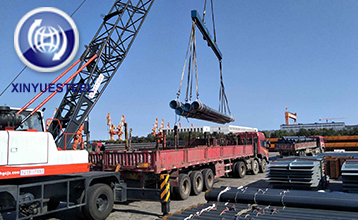Operating characteristics of refractory industry
Sep. 10, 2020
Decline in output, differently affected by the epidemic
From January to June, the output of refractory products decreased by 13.75% year-on-year. Except for the slight increase in thermal insulation products, the output of other varieties has decreased to varying degrees. Except for silica bricks in dense shaped products, clay bricks, high-alumina bricks and magnesia bricks all dropped significantly, down by 23.54%, 25.22% and 24.97% respectively; the "guaranteed" consumable refractory varieties were less affected by the epidemic Refractory companies for infrastructure construction are more and more directly affected by the epidemic.
From a regional point of view, Zhejiang, Jiangsu, Shandong and other production areas are less affected by the epidemic. The main reason is that the variety structure of the local traditional advantageous industries and customer quality are better, and the competitiveness is stronger. Companies in other production areas are more affected by the epidemic.

Decline in refractory exports
From January to June, the export volume of domestic refractory raw materials and the average export price dropped across the board. A careful analysis reveals that there are still differences among different export markets and export product structures. From the demand side, foreign countries have been affected by the epidemic for a long time, and the entire economy has a greater impact. The direct manifestation is that the steel output in North America and the European Union fell by about 18% in the first half of the year. However, the decline in the CIS countries was smaller, about 4.1%. In the Southeast Asian market, steel production in Thailand was more affected by the epidemic, and steel production in Vietnam increased by 4.6% in the first half of the year. However, the demand side of the export market is under pressure. According to the 2020 semi-annual report issued by Vesuvius and Aomag, the sales revenue of refractory materials for the two industry leaders in the first half of 2020 decreased by 19% to 22%, reflecting the foreign steel market’s emphasis on refractory materials. Changes and pressures on the demand side. The above-mentioned enterprises' demand for refractory raw materials will also decrease, but in the first half of the year, the domestic refractory raw material export volume decreased slightly, about 2.40% year-on-year. This shows that the refractory raw material export market is basically stable, and the decline in trade volume is mainly due to the price decline larger.
Regarding the export of refractory products, in the first half of this year, the export business of small export companies was greatly affected by the epidemic, and although large export companies have also been affected, the magnitude is not significant. On the whole, the export volume of alkaline refractory products increased by 1.34% in the first half of the year. Some markets have already rebounded in July. The competitive advantage of domestic refractories in the international market remains strong. I believe that with the recovery of the foreign steel industry, the refractory export market will be restored. The export market will also further concentrate on advantageous enterprises.
In terms of the mutual influence between the domestic market and foreign markets, some exported raw materials returned to the domestic market to participate in competition due to export obstruction, resulting in pressure on the domestic market price. It has shown performance in the first half of the year, but the impact of product market prices is not obvious. The main reason for the fall in prices in the domestic market is due to overcapacity in the industry.
11 of the key refractory companies lose money
In the first half of 2020, there were 11 loss-making key enterprises, accounting for 14.47%, an increase from 2019. The loss of loss-making enterprises was 321 million yuan, an increase of 300 million yuan over the same period last year.
Accounts receivable increased slightly
At the end of June, the total accounts receivable of key enterprises was 16.461 billion yuan, a year-on-year increase of 6.26%. Among the key enterprises, 44 enterprises experienced an increase in accounts receivable, an increase of 57.89%. Among them, 20 companies have increased by more than 20%, with an increase of 26.31%. It is worth noting that the accounts receivable of three manufacturing companies increased by more than 50% year-on-year, which not only increased the capital cost of the company, but also seriously endangered the safety of the company's operations.
Profit margins of key refractory companies fell year-on-year
The association's survey on the operation of 76 key refractory companies showed that the output of refractory materials was 5.275 million tons (including some refractory raw materials), a year-on-year decrease of 12.35%; sales revenue was 25.338 billion yuan, a year-on-year decrease of 7.92%; a profit of 1.441 billion yuan was realized with a profit margin. 5.69%, a year-on-year decrease of 39.15%, but the industry leader still has obvious advantages.



